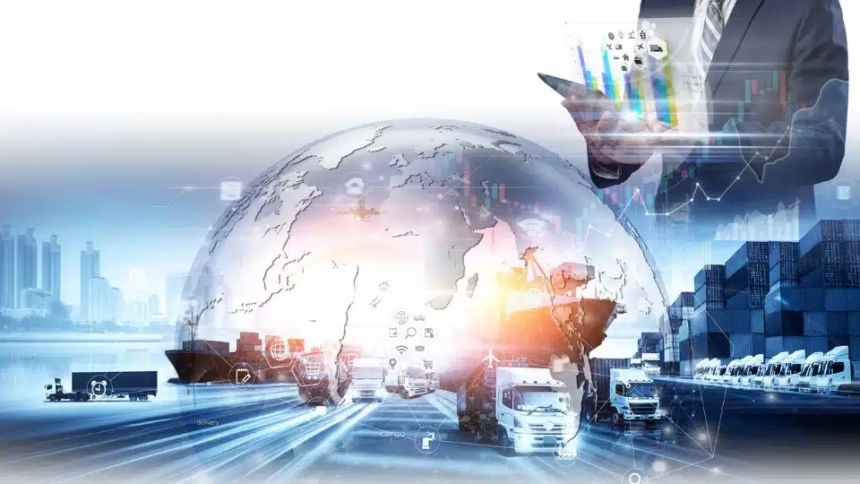Phones, clothes, and cars are taking new paths from factory to front door. The routes are changing, and so are the costs and timelines that families feel at checkout. The Great Pivot is simple to explain: companies are reshaping suppliers and factory locations to cut risk and control costs.
What is pushing this shift? Geopolitics and tariffs, cost swings, climate and labour rules, and new tech. This guide shows what is moving, what it costs, and how to act now with a simple plan.
The Great Pivot in Supply Chain: What It Is and Why It Matters in 2025
The core idea is not a theory. Firms are diversifying suppliers and splitting production by region to reduce risk and delays. Instead of one long chain from one country, they build mixed networks with backups. It looks slower at first, yet it pays off when shocks hit.
Who feels it? Manufacturers face new sourcing rules. Logistics teams rebuild lanes. Small suppliers must meet new compliance checks. Shoppers see prices shift and delivery windows change.
The 2025 backdrop keeps pressure high. Tariffs on key categories like electronics and apparel still shape the cost math. Policy signals remain mixed, and trade talks swing between relief and new hurdles. Some temporary tariff pauses have eased nerves, then headlines move on, and planning uncertainty returns. For a snapshot of that dynamic, see how retaliatory tariff cuts ease supply chain tensions.
The tradeoff is clear. Companies gain reliability and speed to key markets, but they accept more complexity and sometimes higher unit costs.
A simple definition of the Great Pivot
The Great Pivot is the shift from single-country, end-to-end supply chains to mixed, regional networks with backup suppliers. The goals are to cut risk from shocks, shorten lead times, and comply with tighter rules on trade, carbon, and labour. In practice, firms keep some production in China for scale, add options in Vietnam or India, and nearshore for faster service to North America or Europe.
Who feels the change: from factories to families
- Factory workers and suppliers adjust to new orders, quality checks, and standards.
- Logistics teams rework lanes, switch ports, and add warehouses closer to buyers.
- Finance teams model tariffs, taxes, and currency swings to avoid surprise hits.
- Families see prices and delivery windows change for phones, shoes, and appliances.
Quick snapshot: top drivers in 2025
- Geopolitical tensions raise uncertainty, with ongoing trade frictions.
- Tariffs up to around 25% on some imports shift the cost math in electronics and apparel.
- Oil, freight, and inflation swings affect margins and total landed cost.
- Sustainability and labour rules tighten sourcing and reporting.
- AI and analytics improve planning, forecasting, and rerouting.
The Forces Behind the Shift: Geopolitics, Costs, and Climate Rules
The Great Pivot has many causes, yet the reasons are easy to see in daily operations. The costs to ship, insure, store, and comply have changed. Leaders do not want to bet the company on one route or one country.
Tariffs, sanctions, and great power rivalry
Tariffs and export controls lift costs, slow approvals, and add legal risk for certain parts and tech. Many firms reduce reliance on a single country for sensitive parts, while still buying from China for scale, clusters, and stable quality. In electronics, higher tariff exposure on components drives dual sourcing in Vietnam or Mexico. In apparel, duties and rules of origin push brands to add factories in Southeast Asia or South Asia.
Temporary cool-downs can help, but they do not erase the need for options. A brief truce can lift markets and ease some shipments, yet the strategy must look past the next headline. For context on shifting priorities, see how China pivots exports to the US market in 2025.
Inflation, energy, and shipping costs
Fuel prices and freight rates move faster than most budgets. Rerouting to avoid chokepoints, adding insurance, and using longer paths add time and cost. Ocean capacity swings, port congestion, and truck shortages can hit lead times. Nearshoring shortens transit and cuts risk from long sea routes, but labour and energy costs can lift the unit price. The right mix depends on demand volatility, product value, and service targets.
Sustainability and labour laws shaping sourcing
Climate rules, corporate carbon targets, and forced labour laws reshape sourcing lists. Buyers ask for proof of origin, cleaner power sources, and better labour practices. They want traceability beyond tier 1 suppliers. This leads to supplier scorecards, audits, and digital tracking. The cost is real, yet the payoff includes des lower risk of seizures, fines, or brand damage.
China Plus One, Nearshoring, and Regional Supply Chains
Production is not leaving one place for another overnight. China remains a core hub, and for good reasons. The shift is about adding options and spreading risk, not a simple swap.
China stays central, but firms diversify.
China anchors tech and electronics due to scale, supplier clusters, skilled teams, and deep logistics. Many firms still buy from China for key components. To balance risk, they split final assembly or accessories into other countries, or they build a second line closer to the end market. This split flows through planning, taxes, and inventory, so it requires clear rules and clean data.
China Plus One: Vietnam, India, and Southeast Asia
Vietnam attracts apparel, footwear, and electronics assembly thanks to trade access, improved ports, and skilled operators. India draws handset makers, auto suppliers, and components, backed by policy support and a large labour pool. Thailand, Malaysia, and Indonesia also win for parts, testing, and specialty assembly. These moves need time. Capacity constraints, power reliability, and learning curves can slow ramp-up, so brands often phase production over several seasons.
Nearshoring to Mexico for North America
Mexico gains due to short truck routes, time zone alignment, and trade agreements. Auto parts, appliances, harnesses, and electronics assembly fit well. The math shines for goods with high freight cost-to-value ratios or tight service targets. Even with higher labour costs than in parts of Asia, companies win on speed, lower inventory, and fewer expediting fees. Firms still plan for energy costs, local supplier depth, and security measures along key corridors.
Dual supply chains by region to cut risk
A common setup now uses two regional lines. One supports China and Asia customers, the other serves North America or Europe. This reduces tariff exposure and improves delivery time to local markets. The cost adds complexity in planning, tooling, and safety stock. Clear rules on which SKUs ship from which region keep the network steady and avoid internal competition.
Quick map of practical choices
| Strategy | Best For | Pros | Tradeoffs |
|---|---|---|---|
| China Plus One | Electronics, apparel, footwear | Scale in China, backup in Asia | Supplier development time |
| Nearshoring to Mexico | Auto parts, appliances, electronics | Short transit, better service | Higher unit costs in some cases |
| Regional split networks | Multi-market brands with tariff exposure | Less tariff risk, faster to the customer | More SKUs and planning complexity |
| Supplier consolidation | High-mix, low-volume parts | Better quality control and visibility | Less redundancy if overdone |
From Risk to Advantage: Tech, Costs, and a 90-Day Action Plan
Tools and tactics can turn this shift into an edge. Better forecasts, clean data, and clear goals make the network faster and steadier.
AI, analytics, and digital twins for faster decisions
AI supports demand forecasting, risk scoring, and dynamic safety stock. A digital twin of the network can test a tariff change or a port delay before it hits. Teams can see how a Vietnam shift affects lead time, or how a Mexico pilot changes cash-to-cash cycles. When a lane slows, AI flags options, ranks costs, and helps planners reroute with fewer manual calls.
Benefits are practical. Better demand plans reduce stockouts. Smarter buffers cut expediting. Scenario testing avoids sunk costs and helps leaders set guardrails on price, carbon, and service.
What to expect on price, lead times, and inventory
- Short term: setup costs rise. Expect higher unit costs for pilot builds, plus investments in tooling, audits, and data. Buffer stock often increases to cover transition risk.
- Medium term: nearshoring shortens lead times and steadies on-time delivery. With stable lanes, teams trim emergency freight and cut safety stock slowly.
- Ongoing: leaders balance cost, speed, and carbon. Some lanes win on unit price but lose on transit time or emissions. Pick the mix that matches brand promises and customer needs.
A 90-day playbook to start the pivot
- Weeks 1 to 2: map tier 1 and tier 2 suppliers for the top 20 SKUs. Flag single points of failure and long tails with poor visibility. Confirm factory locations and ownership links.
- Weeks 3 to 6: price out dual sourcing in Mexico, Vietnam, or India. Run landed cost, lead time, and tax scenarios. Include tariffs, energy, insurance, and carbon.
- Weeks 7 to 10: pilot a regional bill of materials. Stand up an alternate logistics lane. Test labour and origin compliance checks with real shipments.
- Weeks 11 to 13: launch a KPI dashboard. Track OTIF, cash-to-cash cycle, and CO2 per unit. Adjust safety stock and contracts based on pilot results.
Practical Examples To Ground the Strategy
- Electronics accessories: keep PCB production in China for scale, shift final assembly to Vietnam for US-bound orders. Result: lower tariff risk and shorter customs time for consumer markets.
- Appliances: source motors in Mexico, plastics in the US, and specialty parts from Asia. Assemble near the US border to hit retail delivery windows.
- Apparel basics: split lines between Vietnam and Indonesia. Hold colour and size mix closer to the market. Use air only for launch weeks, then switch to ocean.
Budgeting the Shift Without Surprises
- Tooling and qualification: plan for pilot tooling, line trials, and audits. Budget by SKU family rather than by plant to keep approvals simple.
- Logistics and inventory: allocate funds for extra containers, safety stock, and reverse logistics from pilots that miss specs.
- Compliance and data: invest in supplier traceability, origin proof, and emissions tracking. Build a playbook so audits do not stall shipments.
Team and Governance That Make It Work
- Clear swim lanes: sourcing owns supplier adds, operations owns ramp timing, finance owns landed cost and tax rules, and logistics owns lanes and carriers.
- Decision cadence: weekly stand-ups review risk, fill rate, and pilot milestones. Monthly steering covers tariff and policy updates and greenlights scale-up.
- Contract hygiene: include dual-source clauses, service-level targets, and data-sharing rules. Tie incentives to OTIF and quality, not only price.
Signals to Watch in 2025
- Trade headlines and tariff reviews in electronics and apparel. Even short pauses can move costs for a quarter, then swing back.
- Ocean lane reliability and insurance pricing on longer routes. Transit variance matters as much as average time.
- Power grid stability and energy prices in new hubs. Planned expansions can stall without steady power. Labour supply and training programs in growth regions. Learning curves often set the true pace more than capex does.
Common Pitfalls and How to Avoid Them
- Over-shifting too fast: moving everything at once breaks quality and cash flow. Phase change by SKU cluster.
- Ignoring hidden tiers: tier 2 and tier 3 suppliers can anchor you in one region even if final assembly moves.
- Measuring only unit cost: landed cost, service, and carbon tell the real story. Put all three on the same dashboard.
- Skipping change management: planners, buyers, and plant managers need training and clear rules, or old habits will creep back.
Quick FAQ for Leaders
- Is China still part of the plan? Yes. China remains core for scale and capability, while firms add options to cut risk.
- Will nearshoring always be cheaper? Not always. It often wins on speed and inventory, not on unit cost.
- How fast can this pay off? Pilots can show gains in one or two quarters. Full gains take 12 to 24 months.
- Do smaller companies benefit? Yes. A focused dual-source setup on a handful of SKUs can protect cash and service.
Conclusion
The Great Pivot is not a fad. It is a structural shift toward diversified, regional supply chains that protect service and steady growth. The payoff is faster response to shocks, closer production to customers, and better compliance with new rules. Start small, measure early, and scale what works. The companies that act now will serve customers better, with fewer surprises and a clearer path to profit.














